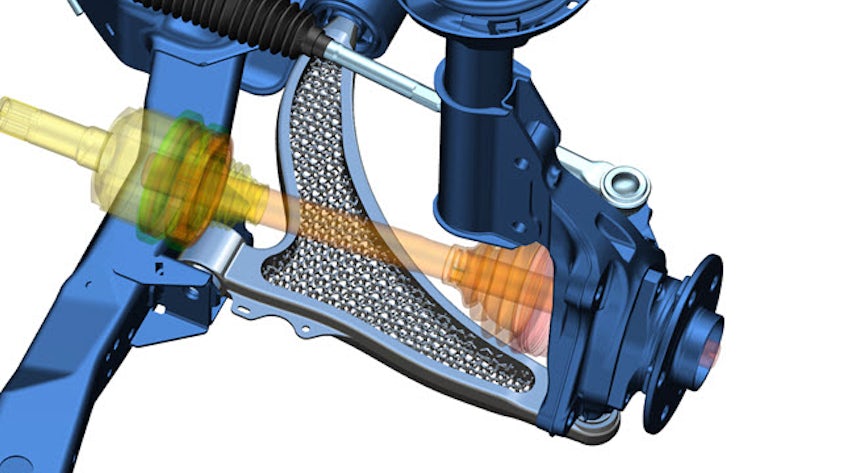3Dモデルは、空間内の点の集合体を使用して物理的なオブジェクトまたはボディを表現し、線、三角形、曲面などのさまざまな幾何学的エンティティによって接続されます。データポイントの集合体である3Dモデルは、手動、アルゴリズム、または表面のスキャンソフトウェアを使用して作成でき、テクスチャマッピングでさらに定義することができます。
3Dモデリングとは、コンピューター支援設計(CAD)プログラムなどのソフトウェアツールを使用して、オブジェクトの3Dデジタル表現を作成することです。3Dモデリングを使用する職業には、消費者向け製品開発、自動車設計、産業機器製造、建築、設計、エンジニアリング、エンターテインメント、ゲーム、ヘルスケアなどがあります。
3Dモデリングソフトウェアとは、オブジェクトやシーンの3次元モデルを作成するために使用されるソフトウェアツールを指します。3Dモデリングソフトウェアは、エンジニアリングや技術設計だけでなく、アニメーション、ゲーム、映画、建築、製品設計など、さまざまな目的に使用できます。これらのツールを使用すると、ポリゴンモデリング、NURBSモデリング、スカルプト、プロシージャルモデリングなど、さまざまなモデリング手法を使用して、3Dジオメトリを作成、操作、視覚化できます。
3Dモデルの基礎
複雑な数式は3Dモデリングソフトウェアの基礎ですが、プログラムはユーザーの計算を自動化し、ツールベースのユーザーインターフェースを備えています。3Dモデルは3Dモデリングのアウトプットであり、さまざまなデジタル表現に基づいています。境界表現(B-rep)は、円錐、球、NURBS(不均一有理基底スプライン)など、数学的に定義されたサーフェスをトポロジーで接続して、オブジェクトを水密ボリュームとして正確に表現します。B-repモデルはエンジニアリングに適したソリューションであり、民生用製品や工業製品の設計、シミュレーション、製造用の3Dモデリングアプリケーションの多くはB-repベースです。ファセットモデルは、接続された平面ポリゴンを使用してサーフェスを近似し、ゲーム、アニメーション、デジタル・モックアップで使用される精度や速度の低い形状表現に適したソリューションです。
仮想3Dモデリング
仮想3Dモデルは、3Dプリントまたは従来の製造プロセスによって物理的なオブジェクトに変換できます。モデルは、3Dレンダリングによって静止画像に変換することもでき、販売、マーケティング、およびeコマースアプリケーション用のフォトリアリスティックな表現を作成するために一般的に使用されます。3Dモデルは、3Dスキャン技術を使用して、製造された部品やアセンブリ、粘土で設計された自由曲面モデル、人体解剖学など、現実世界のオブジェクトのデジタルレプリカを作成するリバース・エンジニアリングのプロセスによって作成できます。3Dモデリングの最新のアプリケーションは、「デジタルツイン」を作成して操作し、製品ライフサイクルの一部として現実世界の対応物の開発、テスト、シミュレーション、製造に使用されます。
3Dモデリングの機能
製造前に製品をあらゆる角度から視覚化したり、顧客へのプレゼンテーションを行ったりすることは、3Dモデリングの最大のメリットです。3Dモデリングを使用すると、製造前に製品に命を吹き込むスタイル、寸法、色、形状を表す製品のすべてのコンポーネントを仮想的に構築して表示できます。3Dモデリングは、顧客向けに製品をカスタマイズおよびパーソナライズするのに役立ちます。
3Dモデリングソフトウェアは、さまざまな業界やアプリケーションで多くのメリットを提供します。
関連製品: NX CAD
